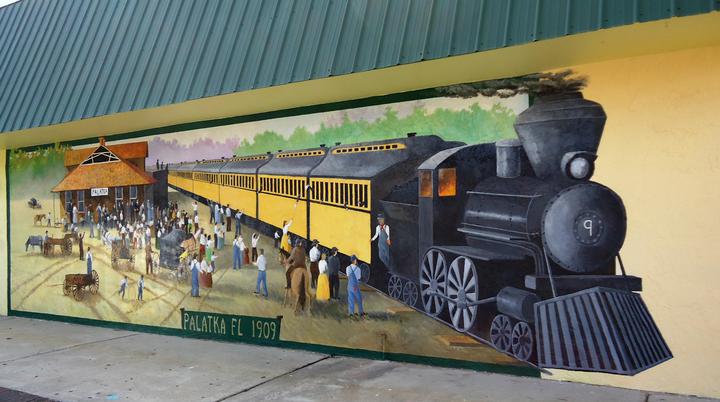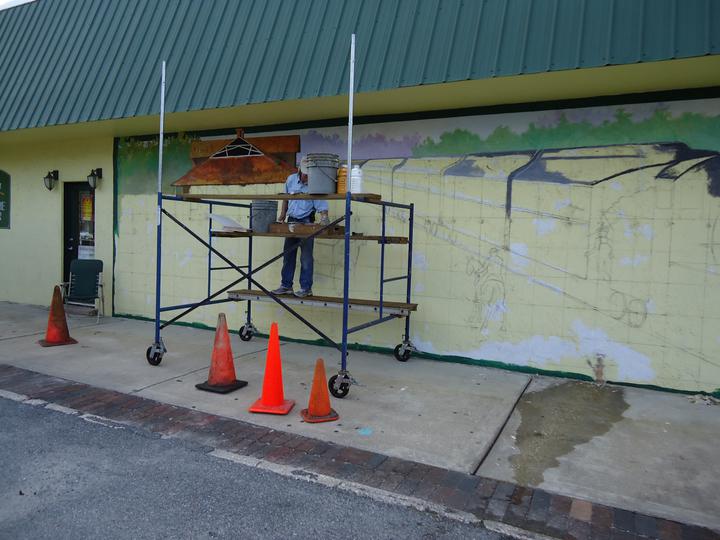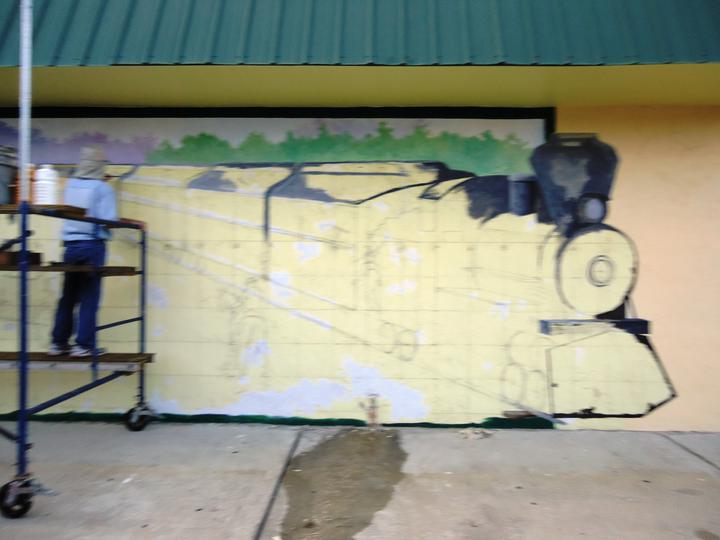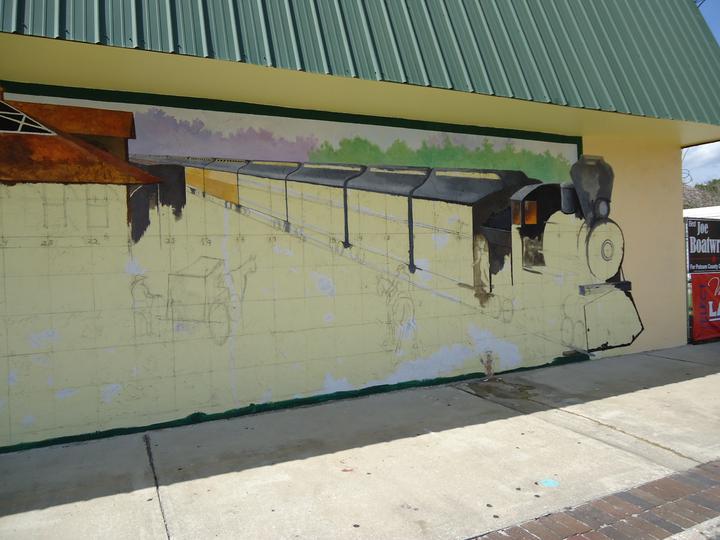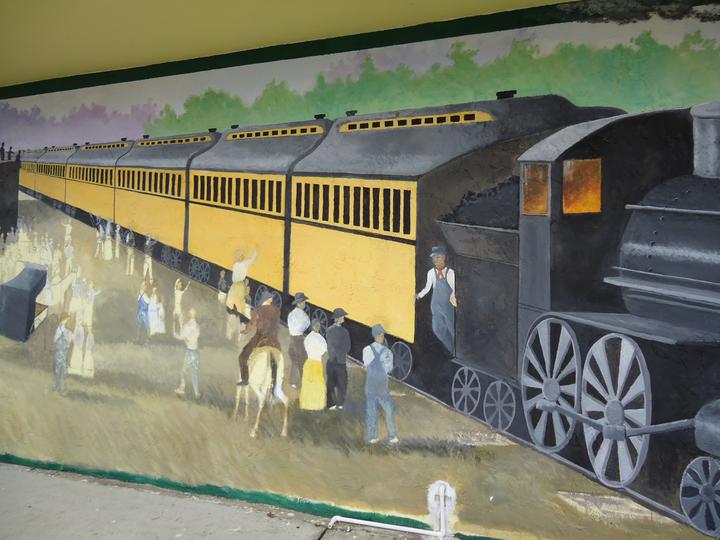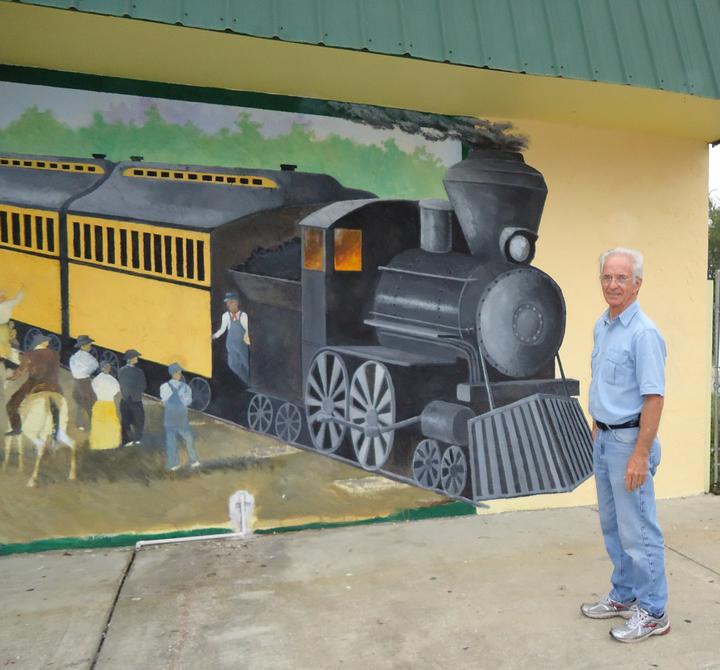Title: The Georgia Southern and Florida Railroad (c. 1906)
Location: St. Johns Avenue and North Seventh Street
Sponsors: City of Palatka
Friends of the Conlee Snyder Mural Committee, Inc.
Artists: Terry Smith
Size: 13 feet by 56 feet
Completed: 2013
Railroads have long been an important part of Putnam County’s history, and in the last thirty years of the 19th century, five major railroad lines passed north and south, east and west, bringing tourists and winter visitors as well as freight to and from Palatka. Even earlier, the first railroad line near Putnam County was the St. Johns Railway, part of the Florida East Coast system, incorporated in 1858. During the Civil War, however, this line, like many others, was destroyed by the Union soldiers who controlled this part of North Florida.
After the war, railroad companies began springing up again, and by the heyday of Palatka’s tourist industry in the 1880s, 26 trains came into Palatka a day. In addition, at least six short lines came to Palatka – from Ocala and Silver Springs, also bringing tourists, and from several lumber operations in the area, such as the Wilson Cypress Company and Rodman, a lumber town near the Ocklawaha River. The railroads also carried cattle to points north and south, which was a boon to the cattle industry in this area. Moreover, prior to the severe freezes of 1886 and 1894-95, Putnam County was home to many citrus groves, shipping produce all over the country by railroads. Henry Flagler (yes, he of St. Augustine fame!) built the first railroad bridge over the St. Johns River in 1885, terminating in Palatka and bringing passengers and freight.
This mural was taken from a penny postcard depicting the Georgia Southern and Florida Railroad train presumably headed north. The GS&F, chartered in 1885, ran from Macon, GA, to Palatka and then back again. The distance was 285 miles one way; passengers left Macon at 11:30 A.M. and arrived in Palatka at 9:45 P.M. Here, the train is heading north with passengers leaning out of the windows and others getting ready to board. Most of the crowd, however, is there to see and be seen. This depot was located close to the river, in the area of Main Street and North Third Street; the tracks ran down the center of Main Street, and many Palatkans even today remember those tracks before the street was paved over.
The images below show the work in progress.
Special thanks are due to Larry Beaton, Marcia Lane, and Allison Waters-Merritt, from whom much of this material was borrowed.

